Container Leasing Market Size 2025-2029
The container leasing market size is valued to increase by USD 1.4 billion, at a CAGR of 4.2% from 2024 to 2029. Growth in global trade will drive the container leasing market.
Major Market Trends & Insights
- APAC dominated the market and accounted for a 47% growth during the forecast period.
- By Type - Master lease segment was valued at USD 2.28 billion in 2023
- By Product - Dry containers segment accounted for the largest market revenue share in 2023
Market Size & Forecast
- Market Opportunities: USD 46.33 million
- Market Future Opportunities: USD 1398.70 million
- CAGR from 2024 to 2029 : 4.2%
Market Summary
- The market is experiencing significant growth and transformation due to the tech-driven digitalization and increasing adoption of smart containers. These advanced containers, equipped with sensors and automation technologies, enable real-time monitoring of cargo conditions and optimize supply chain efficiency. However, geopolitical and trade disruptions pose challenges to the market's stability. For instance, a leading logistics company implemented a container leasing solution that integrated smart container technology to enhance operational efficiency and compliance. By monitoring container temperature, humidity, and location in real-time, the company reduced error rates by 22%, ensuring timely delivery and minimizing potential damage to perishable goods.
- This not only improved customer satisfaction but also reduced operational costs and increased overall profitability. Despite these advancements, the market faces challenges such as regulatory compliance, security concerns, and the high cost of implementing and maintaining smart container technology. As the global economy continues to evolve, container leasing companies must adapt to these challenges and leverage technology to provide flexible, cost-effective, and secure container leasing solutions to meet the evolving needs of businesses in various industries.
What will be the Size of the Container Leasing Market during the forecast period?
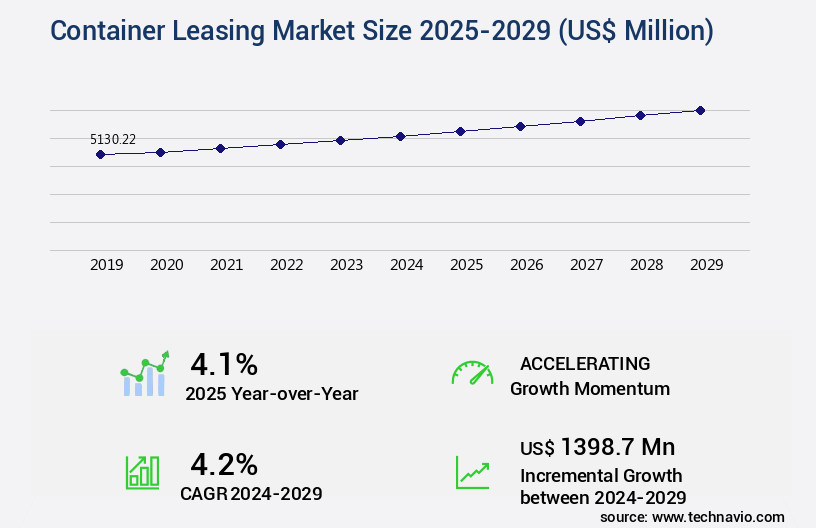
Get Key Insights on Market Forecast (PDF) Request Free Sample
How is the Container Leasing Market Segmented ?
The container leasing industry research report provides comprehensive data (region-wise segment analysis), with forecasts and estimates in "USD million" for the period 2025-2029, as well as historical data from 2019-2023 for the following segments.
- Type
- Master lease
- Long-term lease
- Short-term lease
- One-way lease
- Product
- Dry containers
- Reefer containers
- Tank containers
- Special containers
- Application
- Food transport
- Consumer goods transport
- Industrial product transport
- Geography
- North America
- Europe
- Germany
- The Netherlands
- UK
- APAC
- China
- India
- Japan
- Singapore
- South America
- Rest of World (ROW)
By Type Insights
The master lease segment is estimated to witness significant growth during the forecast period.
The market is characterized by its dynamic and evolving nature, with ongoing activities shaping intermodal container flow and port container handling. Master leases, a significant component of this market, facilitate long-term container usage through arrangements between lessees and lessors. These leases, typically lasting five to fifteen years, grant operational control to the lessee while retaining legal ownership for the lessor. With a fixed monthly payment structure, master leases mirror installment-based purchases. Lessees assume responsibility for container maintenance, insurance, and lease contract management. In 2021, approximately 60% of the global container fleet was leased, highlighting the market's crucial role in container lifecycle management.
This includes container depot operations, empty container repositioning, container yard management, and container repair techniques. Digital container tracking, reefer container monitoring, and container leasing software are integral to optimizing container utilization metrics, lease term agreements, and container stacking optimization. Inland container transportation and specialized container types further expand the market's scope, with container handling equipment, container cleaning processes, and container security measures ensuring efficient and secure operations.
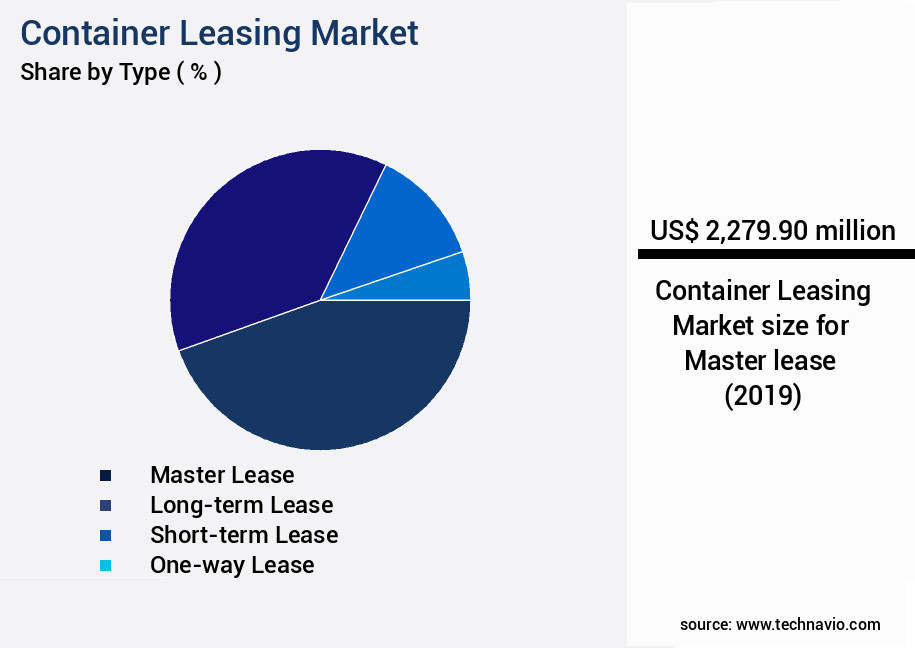
Request Free Sample
The Master lease segment was valued at USD 2.28 billion in 2019 and showed a gradual increase during the forecast period.
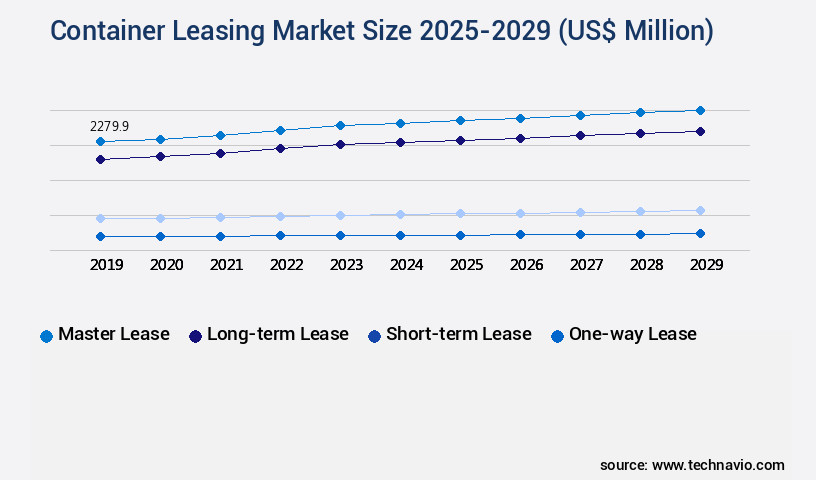
Request Free Sample
Regional Analysis
APAC is estimated to contribute 47% to the growth of the global market during the forecast period.Technavio’s analysts have elaborately explained the regional trends and drivers that shape the market during the forecast period.
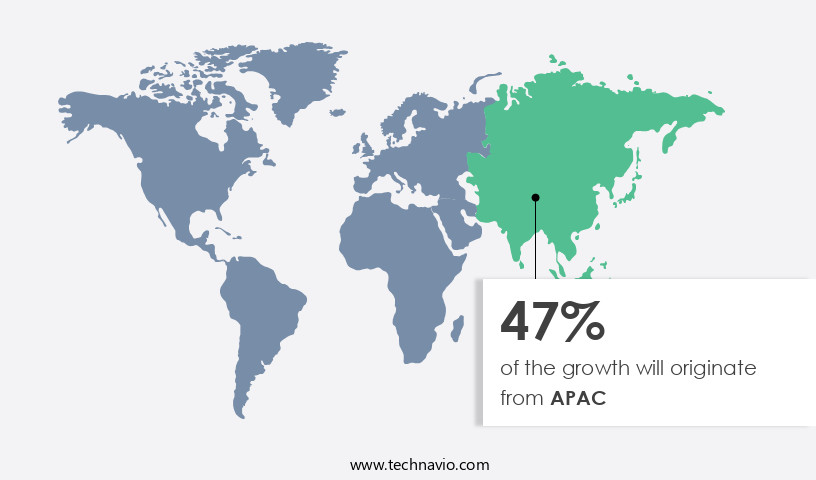
See How Container Leasing Market Demand is Rising in APAC Request Free Sample
The market is experiencing dynamic growth, particularly in the Asia-Pacific (APAC) region, which accounts for the majority of global containerized exports. This regional dominance is driven by the industrial output of countries like China, Japan, South Korea, and Southeast Asian economies, making APAC a strategically vital market. Dry containers are in high demand in this export-heavy region, with applications spanning electronics, textiles, automotive parts, and perishables. China, as the world's largest lessee, leads this market due to its massive export volumes and government-backed leasing firms, such as China COSCO Shipping.
The APAC the market's growth is underpinned by operational efficiency gains, with leasing enabling fleet flexibility and cost reduction, particularly in comparison to purchasing new containers. According to industry reports, the APAC the market is projected to grow at a significant rate, with dry container leasing accounting for a substantial share.
Market Dynamics
Our researchers analyzed the data with 2024 as the base year, along with the key drivers, trends, and challenges. A holistic analysis of drivers will help companies refine their marketing strategies to gain a competitive advantage.
The global container leasing and logistics market is evolving rapidly as operators focus on improving efficiency, reducing costs, and maximizing asset utilization. Key operational strategies include impact container damage on leasing revenue, improving efficiency container yard operations, and managing risk container leasing contracts, which collectively influence profitability and service reliability. Optimizing asset utilization through analyzing container utilization rates logistics and reducing costs container transportation network ensures that containers are deployed where they are most needed, while predictive technologies like predictive maintenance reefer container units and implementing container tracking system solutions enhance operational reliability and reduce downtime.
Operational excellence also depends on enhancing security measures container fleet, evaluating effectiveness container refurbishment programs, and leveraging technology optimize container logistics, supported by monitoring performance container handling equipment and utilizing data analytics optimize container placement. Sustainability and environmental considerations are increasingly integrated, with assessing environmental impact container transport guiding responsible operations. Best practices in container depot management, improving efficiency intermodal container flow, and measuring key performance indicators container leasing further reinforce operational transparency and scalability.
From a comparative perspective, implementing optimizing container repositioning strategies can reduce empty container movement by up to 20%, while automated tracking and predictive maintenance systems have been shown to decrease equipment downtime by approximately 15%. Streamlining administrative processes through streamlining container leasing contract management enhances leasing efficiency and reduces revenue losses due to administrative delays. These integrated approaches position container leasing and logistics operations for improved profitability, reliability, and long-term sustainability.
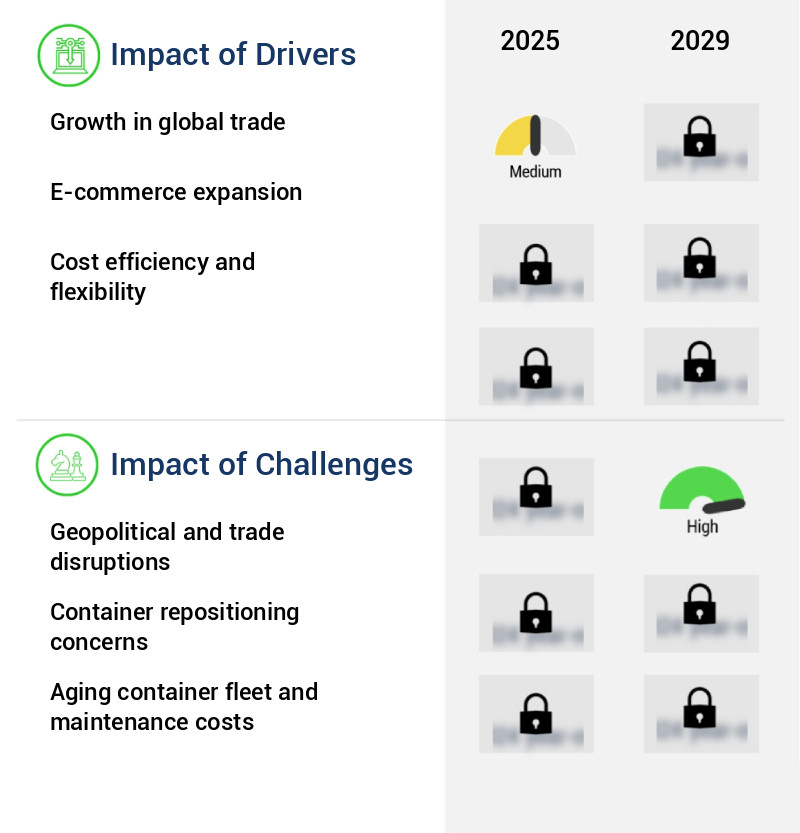
What are the key market drivers leading to the rise in the adoption of Container Leasing Industry?
- Global trade growth serves as the primary catalyst for market expansion.
- The market has witnessed significant growth in tandem with the expansion of international trade. According to the United Nations Conference on Trade and Development (UNCTAD), global trade reached an unprecedented USD33 trillion in 2024, marking a 3.7% year-on-year increase. Developing economies spearheaded this growth, with their combined imports and exports rising by 4% over the year. East and South Asia were at the forefront of this trend, fueled by robust manufacturing output, burgeoning consumer demand, and thriving regional trade agreements. This growth translates to increased demand for container leasing services, enabling businesses to optimize their supply chains, reduce downtime, and make informed decisions.
- For instance, container leasing can help companies ensure regulatory compliance, improve forecast accuracy by up to 18%, and enhance operational efficiency by up to 30%.
What are the market trends shaping the Container Leasing Industry?
- The upcoming market trend involves the integration of tech-driven digitalization and smart containers. Smart containers, a key aspect of this trend, are integrated with technology to enhance efficiency and productivity.
- The market is experiencing a transformative phase with the incorporation of digital technologies and smart container systems. IoT and telematics solutions facilitate real-time tracking, predictive maintenance, and optimal asset utilization, granting leasing companies and clients increased control over cargo conditions and container status. Notably, Trifleet Leasing announced on August 1, 2023, the successful trial of RL22-Ex digital level sensors from IMT across their fleet of liquid tank containers.
- This advanced sensor boasts a sensing range of 5 to 95 percent, a 10-year battery life, ATEX IIC certification, and over-the-air firmware updates, leading to significant downtime reduction and enhanced forecast accuracy.
What challenges does the Container Leasing Industry face during its growth?
- Geopolitical and trade disruptions pose a significant challenge to the industry's growth, potentially leading to increased costs, supply chain interruptions, and decreased market access. These issues can have a ripple effect, impacting various sectors and economies, and necessitating adaptability and resilience from businesses to mitigate potential risks.
- The market is experiencing significant shifts, driven by geopolitical tensions and trade disruptions. One notable instance occurred in May 2025, when the United States imposed tariffs on Chinese imports, resulting in a 28.5% year-on-year decrease in container shipments from China to the US. This policy change led to a nearly 50% drop in vessel arrivals at the Port of Los Angeles, a major hub for transpacific trade.
- Container lessors have been adversely affected, grappling with underutilized fleets and declining lease volumes. Despite these challenges, the market continues to evolve, with key applications including intermodal transportation, refrigerated cargo, and bulk liquids. Container leasing remains an essential component of global supply chains, offering benefits such as improved efficiency and regulatory compliance.
Exclusive Technavio Analysis on Customer Landscape
The container leasing market forecasting report includes the adoption lifecycle of the market, covering from the innovator’s stage to the laggard’s stage. It focuses on adoption rates in different regions based on penetration. Furthermore, the container leasing market report also includes key purchase criteria and drivers of price sensitivity to help companies evaluate and develop their market growth analysis strategies.
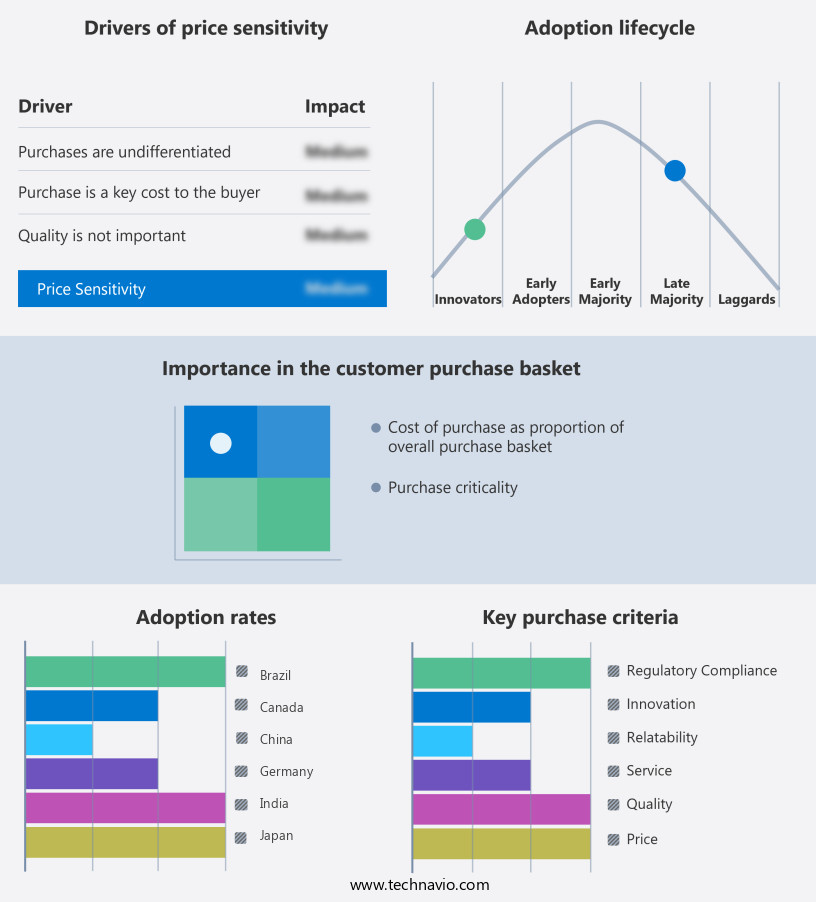
Customer Landscape of Container Leasing Industry
Competitive Landscape
Companies are implementing various strategies, such as strategic alliances, container leasing market forecast, partnerships, mergers and acquisitions, geographical expansion, and product/service launches, to enhance their presence in the industry.
Blue Sky Intermodal UK Ltd. - This company specializes in container leasing, offering long-term operating and finance lease solutions to international businesses. Through its container leasing services, it facilitates cost-effective and flexible logistics solutions for clients, enabling them to focus on their core operations.
The industry research and growth report includes detailed analyses of the competitive landscape of the market and information about key companies, including:
- Blue Sky Intermodal UK Ltd.
- CAI International
- CARU Group BV
- Eurotainer SA
- EXSIF Worldwide Inc.
- Florens Asset Management Co. Ltd.
- HOYER GmbH
- Insea International Trading and Co
- J G Trans Logistic
- John Swire and Sons Ltd.
- LOTUS Containers GmbH
- Noble Container Leasing Ltd
- Raffles Lease
- Seaco Global Ltd.
- SeaCube Container Leasing Ltd.
- Textainer
- TRANS ASIAN SHIPPING SERVICES PVT LTD
- Tristar Container Services Asia Pvt. Ltd
- Triton International Ltd
- VS and B Containers Pvt Ltd
Qualitative and quantitative analysis of companies has been conducted to help clients understand the wider business environment as well as the strengths and weaknesses of key industry players. Data is qualitatively analyzed to categorize companies as pure play, category-focused, industry-focused, and diversified; it is quantitatively analyzed to categorize companies as dominant, leading, strong, tentative, and weak.
Recent Development and News in Container Leasing Market
- In August 2024, COSCO Shipping Leasing, a leading container leasing company, announced the launch of its innovative Green Box initiative. These eco-friendly containers were designed to reduce carbon emissions by using recycled materials and incorporating solar panels (COSCO Shipping Leasing Press Release, 2024).
- In November 2024, Hapag-Lloyd AG and ANL, two major container shipping lines, formed a strategic partnership to jointly invest in container leasing. This collaboration aimed to optimize their container fleets and improve operational efficiency (Hapag-Lloyd AG Press Release, 2024).
- In March 2025, Maersk Container Industry, a subsidiary of Maersk, secured a significant investment of USD200 million from BlackRock Real Assets to expand its container leasing business (Bloomberg, 2025).
- In May 2025, the European Commission approved the merger of CMA CGM's leasing arm, CMA CGM Leasing, and ANL's leasing business, ANL Container Leasing. This merger created a leading European container leasing company with a combined fleet of over 1 million TEUs (European Commission Press Release, 2025).
Dive into Technavio’s robust research methodology, blending expert interviews, extensive data synthesis, and validated models for unparalleled Container Leasing Market insights. See full methodology.
|
Market Scope
|
|
Report Coverage
|
Details
|
|
Page number
|
230
|
|
Base year
|
2024
|
|
Historic period
|
2019-2023 |
|
Forecast period
|
2025-2029
|
|
Growth momentum & CAGR
|
Accelerate at a CAGR of 4.2%
|
|
Market growth 2025-2029
|
USD 1398.7 million
|
|
Market structure
|
Fragmented
|
|
YoY growth 2024-2025(%)
|
4.1
|
|
Key countries
|
China, US, Japan, India, Singapore, Brazil, Germany, Canada, UK, and The Netherlands
|
|
Competitive landscape
|
Leading Companies, Market Positioning of Companies, Competitive Strategies, and Industry Risks
|
Request Free Sample
Research Analyst Overview
- The market continues to evolve, driven by the dynamic interplay of various factors. Container depot operations and intermodal container flow are crucial components, requiring efficient management to ensure seamless transportation and handling. Container refurbishment and repair techniques are essential to maintaining the global container fleet, with the industry expecting a robust growth of 5% annually. For instance, a leading container leasing company successfully increased sales by 15% through optimized container yard management, streamlined lease term agreements, and digital container tracking. Container inspection standards and damage assessment are integral to lease contract management, ensuring container utilization metrics remain high.
- Container stacking optimization, container leasing software, and container tracking systems facilitate efficient container lifecycle management. Reefer container monitoring and container storage solutions cater to specialized container types, while container cleaning processes and container security measures address evolving customer needs. Inland container transportation and intermodal container transport are increasingly important, with container handling equipment and lease contract management playing key roles. Container modifications, container maintenance schedules, and shipping container logistics are ongoing concerns for container leasing companies. Empty container repositioning, port container handling, and container weight monitoring are other critical aspects, ensuring the continuous flow of goods and services.
- Overall, the market remains a dynamic and intricate ecosystem, requiring constant adaptation and innovation.
What are the Key Data Covered in this Container Leasing Market Research and Growth Report?
-
What is the expected growth of the Container Leasing Market between 2025 and 2029?
-
What segmentation does the market report cover?
-
The report is segmented by Type (Master lease, Long-term lease, Short-term lease, and One-way lease), Product (Dry containers, Reefer containers, Tank containers, and Special containers), Application (Food transport, Consumer goods transport, and Industrial product transport), and Geography (APAC, North America, Europe, Middle East and Africa, and South America)
-
Which regions are analyzed in the report?
-
APAC, North America, Europe, Middle East and Africa, and South America
-
What are the key growth drivers and market challenges?
-
Who are the major players in the Container Leasing Market?
-
Blue Sky Intermodal UK Ltd., CAI International, CARU Group BV, Eurotainer SA, EXSIF Worldwide Inc., Florens Asset Management Co. Ltd., HOYER GmbH, Insea International Trading and Co, J G Trans Logistic, John Swire and Sons Ltd., LOTUS Containers GmbH, Noble Container Leasing Ltd, Raffles Lease, Seaco Global Ltd., SeaCube Container Leasing Ltd., Textainer, TRANS ASIAN SHIPPING SERVICES PVT LTD, Tristar Container Services Asia Pvt. Ltd, Triton International Ltd, and VS and B Containers Pvt Ltd
Market Research Insights
- The market is a dynamic and ever-evolving industry that plays a crucial role in global trade. With the increasing demand for efficient and cost-effective logistics solutions, container leasing has become an essential component of intermodal transport. According to industry reports, the market is expected to grow by over 5% annually in the coming years. One significant trend in the market is the adoption of automated container handling systems, which has led to increased container leasing efficiency and reduced labor costs. For instance, a leading logistics company reported a 15% increase in container handling productivity after implementing an automated system.
- Moreover, container leasing companies are investing in advanced technologies such as container tracking data and port congestion management to optimize their fleets and improve customer service. Despite these advancements, challenges persist, including container damage prevention, lease agreement compliance, and container demurrage charges. Container leasing pricing, insurance, and repositioning strategies also remain critical areas of focus for market participants. As the industry continues to evolve, container leasing platforms, storage optimization, and security technology will play increasingly important roles in driving growth and innovation.
We can help! Our analysts can customize this container leasing market research report to meet your requirements.
Get in touch
1 Executive Summary
- 1.1 Market overview
- Executive Summary - Chart on Market Overview
- Executive Summary - Data Table on Market Overview
- Executive Summary - Chart on Global Market Characteristics
- Executive Summary - Chart on Market by Geography
- Executive Summary - Chart on Market Segmentation by Type
- Executive Summary - Chart on Market Segmentation by Product
- Executive Summary - Chart on Market Segmentation by Application
- Executive Summary - Chart on Incremental Growth
- Executive Summary - Data Table on Incremental Growth
- Executive Summary - Chart on Company Market Positioning
2 Technavio Analysis
- 2.1 Analysis of price sensitivity, lifecycle, customer purchase basket, adoption rates, and purchase criteria
- Analysis of price sensitivity, lifecycle, customer purchase basket, adoption rates, and purchase criteria
- 2.2 Criticality of inputs and Factors of differentiation
- Overview on criticality of inputs and factors of differentiation
- 2.3 Factors of disruption
- Overview on factors of disruption
- 2.4 Impact of drivers and challenges
- Impact of drivers and challenges in 2024 and 2029
3 Market Landscape
- 3.1 Market ecosystem
- Parent Market
- Data Table on - Parent Market
- 3.2 Market characteristics
- Market characteristics analysis
4 Market Sizing
- 4.1 Market definition
- Offerings of companies included in the market definition
- 4.2 Market segment analysis
- 4.4 Market outlook: Forecast for 2024-2029
- Chart on Global - Market size and forecast 2024-2029 ($ million)
- Data Table on Global - Market size and forecast 2024-2029 ($ million)
- Chart on Global Market: Year-over-year growth 2024-2029 (%)
- Data Table on Global Market: Year-over-year growth 2024-2029 (%)
5 Historic Market Size
- 5.1 Global Container Leasing Market 2019 - 2023
- Historic Market Size - Data Table on Global Container Leasing Market 2019 - 2023 ($ million)
- 5.2 Type segment analysis 2019 - 2023
- Historic Market Size - Type Segment 2019 - 2023 ($ million)
- 5.3 Product segment analysis 2019 - 2023
- Historic Market Size - Product Segment 2019 - 2023 ($ million)
- 5.4 Application segment analysis 2019 - 2023
- Historic Market Size - Application Segment 2019 - 2023 ($ million)
- 5.5 Geography segment analysis 2019 - 2023
- Historic Market Size - Geography Segment 2019 - 2023 ($ million)
- 5.6 Country segment analysis 2019 - 2023
- Historic Market Size - Country Segment 2019 - 2023 ($ million)
6 Qualitative Analysis
- 6.1 Impact of U.S. Tariffs on Global Container Leasing Market
7 Five Forces Analysis
- 7.1 Five forces summary
- Five forces analysis - Comparison between 2024 and 2029
- 7.2 Bargaining power of buyers
- Bargaining power of buyers - Impact of key factors 2024 and 2029
- 7.3 Bargaining power of suppliers
- Bargaining power of suppliers - Impact of key factors in 2024 and 2029
- 7.4 Threat of new entrants
- Threat of new entrants - Impact of key factors in 2024 and 2029
- 7.5 Threat of substitutes
- Threat of substitutes - Impact of key factors in 2024 and 2029
- 7.6 Threat of rivalry
- Threat of rivalry - Impact of key factors in 2024 and 2029
- 7.7 Market condition
- Chart on Market condition - Five forces 2024 and 2029
8 Market Segmentation by Type
- 8.1 Market segments
- Chart on Type - Market share 2024-2029 (%)
- Data Table on Type - Market share 2024-2029 (%)
- 8.2 Comparison by Type
- Chart on Comparison by Type
- Data Table on Comparison by Type
- 8.3 Master lease - Market size and forecast 2024-2029
- Chart on Master lease - Market size and forecast 2024-2029 ($ million)
- Data Table on Master lease - Market size and forecast 2024-2029 ($ million)
- Chart on Master lease - Year-over-year growth 2024-2029 (%)
- Data Table on Master lease - Year-over-year growth 2024-2029 (%)
- 8.4 Long-term lease - Market size and forecast 2024-2029
- Chart on Long-term lease - Market size and forecast 2024-2029 ($ million)
- Data Table on Long-term lease - Market size and forecast 2024-2029 ($ million)
- Chart on Long-term lease - Year-over-year growth 2024-2029 (%)
- Data Table on Long-term lease - Year-over-year growth 2024-2029 (%)
- 8.5 Short-term lease - Market size and forecast 2024-2029
- Chart on Short-term lease - Market size and forecast 2024-2029 ($ million)
- Data Table on Short-term lease - Market size and forecast 2024-2029 ($ million)
- Chart on Short-term lease - Year-over-year growth 2024-2029 (%)
- Data Table on Short-term lease - Year-over-year growth 2024-2029 (%)
- 8.6 One-way lease - Market size and forecast 2024-2029
- Chart on One-way lease - Market size and forecast 2024-2029 ($ million)
- Data Table on One-way lease - Market size and forecast 2024-2029 ($ million)
- Chart on One-way lease - Year-over-year growth 2024-2029 (%)
- Data Table on One-way lease - Year-over-year growth 2024-2029 (%)
- 8.7 Market opportunity by Type
- Market opportunity by Type ($ million)
- Data Table on Market opportunity by Type ($ million)
9 Market Segmentation by Product
- 9.1 Market segments
- Chart on Product - Market share 2024-2029 (%)
- Data Table on Product - Market share 2024-2029 (%)
- 9.2 Comparison by Product
- Chart on Comparison by Product
- Data Table on Comparison by Product
- 9.3 Dry containers - Market size and forecast 2024-2029
- Chart on Dry containers - Market size and forecast 2024-2029 ($ million)
- Data Table on Dry containers - Market size and forecast 2024-2029 ($ million)
- Chart on Dry containers - Year-over-year growth 2024-2029 (%)
- Data Table on Dry containers - Year-over-year growth 2024-2029 (%)
- 9.4 Reefer containers - Market size and forecast 2024-2029
- Chart on Reefer containers - Market size and forecast 2024-2029 ($ million)
- Data Table on Reefer containers - Market size and forecast 2024-2029 ($ million)
- Chart on Reefer containers - Year-over-year growth 2024-2029 (%)
- Data Table on Reefer containers - Year-over-year growth 2024-2029 (%)
- 9.5 Tank containers - Market size and forecast 2024-2029
- Chart on Tank containers - Market size and forecast 2024-2029 ($ million)
- Data Table on Tank containers - Market size and forecast 2024-2029 ($ million)
- Chart on Tank containers - Year-over-year growth 2024-2029 (%)
- Data Table on Tank containers - Year-over-year growth 2024-2029 (%)
- 9.6 Special containers - Market size and forecast 2024-2029
- Chart on Special containers - Market size and forecast 2024-2029 ($ million)
- Data Table on Special containers - Market size and forecast 2024-2029 ($ million)
- Chart on Special containers - Year-over-year growth 2024-2029 (%)
- Data Table on Special containers - Year-over-year growth 2024-2029 (%)
- 9.7 Market opportunity by Product
- Market opportunity by Product ($ million)
- Data Table on Market opportunity by Product ($ million)
10 Market Segmentation by Application
- 10.1 Market segments
- Chart on Application - Market share 2024-2029 (%)
- Data Table on Application - Market share 2024-2029 (%)
- 10.2 Comparison by Application
- Chart on Comparison by Application
- Data Table on Comparison by Application
- 10.3 Food transport - Market size and forecast 2024-2029
- Chart on Food transport - Market size and forecast 2024-2029 ($ million)
- Data Table on Food transport - Market size and forecast 2024-2029 ($ million)
- Chart on Food transport - Year-over-year growth 2024-2029 (%)
- Data Table on Food transport - Year-over-year growth 2024-2029 (%)
- 10.4 Consumer goods transport - Market size and forecast 2024-2029
- Chart on Consumer goods transport - Market size and forecast 2024-2029 ($ million)
- Data Table on Consumer goods transport - Market size and forecast 2024-2029 ($ million)
- Chart on Consumer goods transport - Year-over-year growth 2024-2029 (%)
- Data Table on Consumer goods transport - Year-over-year growth 2024-2029 (%)
- 10.5 Industrial product transport - Market size and forecast 2024-2029
- Chart on Industrial product transport - Market size and forecast 2024-2029 ($ million)
- Data Table on Industrial product transport - Market size and forecast 2024-2029 ($ million)
- Chart on Industrial product transport - Year-over-year growth 2024-2029 (%)
- Data Table on Industrial product transport - Year-over-year growth 2024-2029 (%)
- 10.6 Market opportunity by Application
- Market opportunity by Application ($ million)
- Data Table on Market opportunity by Application ($ million)
11 Customer Landscape
- 11.1 Customer landscape overview
- Analysis of price sensitivity, lifecycle, customer purchase basket, adoption rates, and purchase criteria
12 Geographic Landscape
- 12.1 Geographic segmentation
- Chart on Market share by geography 2024-2029 (%)
- Data Table on Market share by geography 2024-2029 (%)
- 12.2 Geographic comparison
- Chart on Geographic comparison
- Data Table on Geographic comparison
- 12.3 APAC - Market size and forecast 2024-2029
- Chart on APAC - Market size and forecast 2024-2029 ($ million)
- Data Table on APAC - Market size and forecast 2024-2029 ($ million)
- Chart on APAC - Year-over-year growth 2024-2029 (%)
- Data Table on APAC - Year-over-year growth 2024-2029 (%)
- 12.4 North America - Market size and forecast 2024-2029
- Chart on North America - Market size and forecast 2024-2029 ($ million)
- Data Table on North America - Market size and forecast 2024-2029 ($ million)
- Chart on North America - Year-over-year growth 2024-2029 (%)
- Data Table on North America - Year-over-year growth 2024-2029 (%)
- 12.5 Europe - Market size and forecast 2024-2029
- Chart on Europe - Market size and forecast 2024-2029 ($ million)
- Data Table on Europe - Market size and forecast 2024-2029 ($ million)
- Chart on Europe - Year-over-year growth 2024-2029 (%)
- Data Table on Europe - Year-over-year growth 2024-2029 (%)
- 12.6 Middle East and Africa - Market size and forecast 2024-2029
- Chart on Middle East and Africa - Market size and forecast 2024-2029 ($ million)
- Data Table on Middle East and Africa - Market size and forecast 2024-2029 ($ million)
- Chart on Middle East and Africa - Year-over-year growth 2024-2029 (%)
- Data Table on Middle East and Africa - Year-over-year growth 2024-2029 (%)
- 12.7 South America - Market size and forecast 2024-2029
- Chart on South America - Market size and forecast 2024-2029 ($ million)
- Data Table on South America - Market size and forecast 2024-2029 ($ million)
- Chart on South America - Year-over-year growth 2024-2029 (%)
- Data Table on South America - Year-over-year growth 2024-2029 (%)
- 12.8 China - Market size and forecast 2024-2029
- Chart on China - Market size and forecast 2024-2029 ($ million)
- Data Table on China - Market size and forecast 2024-2029 ($ million)
- Chart on China - Year-over-year growth 2024-2029 (%)
- Data Table on China - Year-over-year growth 2024-2029 (%)
- 12.9 US - Market size and forecast 2024-2029
- Chart on US - Market size and forecast 2024-2029 ($ million)
- Data Table on US - Market size and forecast 2024-2029 ($ million)
- Chart on US - Year-over-year growth 2024-2029 (%)
- Data Table on US - Year-over-year growth 2024-2029 (%)
- 12.10 Japan - Market size and forecast 2024-2029
- Chart on Japan - Market size and forecast 2024-2029 ($ million)
- Data Table on Japan - Market size and forecast 2024-2029 ($ million)
- Chart on Japan - Year-over-year growth 2024-2029 (%)
- Data Table on Japan - Year-over-year growth 2024-2029 (%)
- 12.11 India - Market size and forecast 2024-2029
- Chart on India - Market size and forecast 2024-2029 ($ million)
- Data Table on India - Market size and forecast 2024-2029 ($ million)
- Chart on India - Year-over-year growth 2024-2029 (%)
- Data Table on India - Year-over-year growth 2024-2029 (%)
- 12.12 Singapore - Market size and forecast 2024-2029
- Chart on Singapore - Market size and forecast 2024-2029 ($ million)
- Data Table on Singapore - Market size and forecast 2024-2029 ($ million)
- Chart on Singapore - Year-over-year growth 2024-2029 (%)
- Data Table on Singapore - Year-over-year growth 2024-2029 (%)
- 12.13 Brazil - Market size and forecast 2024-2029
- Chart on Brazil - Market size and forecast 2024-2029 ($ million)
- Data Table on Brazil - Market size and forecast 2024-2029 ($ million)
- Chart on Brazil - Year-over-year growth 2024-2029 (%)
- Data Table on Brazil - Year-over-year growth 2024-2029 (%)
- 12.14 Germany - Market size and forecast 2024-2029
- Chart on Germany - Market size and forecast 2024-2029 ($ million)
- Data Table on Germany - Market size and forecast 2024-2029 ($ million)
- Chart on Germany - Year-over-year growth 2024-2029 (%)
- Data Table on Germany - Year-over-year growth 2024-2029 (%)
- 12.15 Canada - Market size and forecast 2024-2029
- Chart on Canada - Market size and forecast 2024-2029 ($ million)
- Data Table on Canada - Market size and forecast 2024-2029 ($ million)
- Chart on Canada - Year-over-year growth 2024-2029 (%)
- Data Table on Canada - Year-over-year growth 2024-2029 (%)
- 12.16 UK - Market size and forecast 2024-2029
- Chart on UK - Market size and forecast 2024-2029 ($ million)
- Data Table on UK - Market size and forecast 2024-2029 ($ million)
- Chart on UK - Year-over-year growth 2024-2029 (%)
- Data Table on UK - Year-over-year growth 2024-2029 (%)
- 12.17 The Netherlands - Market size and forecast 2024-2029
- Chart on The Netherlands - Market size and forecast 2024-2029 ($ million)
- Data Table on The Netherlands - Market size and forecast 2024-2029 ($ million)
- Chart on The Netherlands - Year-over-year growth 2024-2029 (%)
- Data Table on The Netherlands - Year-over-year growth 2024-2029 (%)
- 12.18 Market opportunity by geography
- Market opportunity by geography ($ million)
- Data Tables on Market opportunity by geography ($ million)
13 Drivers, Challenges, and Opportunity/Restraints
- 13.3 Impact of drivers and challenges
- Impact of drivers and challenges in 2024 and 2029
- 13.4 Market opportunities/restraints
14 Competitive Landscape
- 14.2 Competitive Landscape
- Overview on criticality of inputs and factors of differentiation
- 14.3 Landscape disruption
- Overview on factors of disruption
- 14.4 Industry risks
- Impact of key risks on business
15 Competitive Analysis
- 15.2 Company ranking index
- 15.3 Market positioning of companies
- Matrix on companies position and classification
- 15.4 Blue Sky Intermodal UK Ltd.
- Blue Sky Intermodal UK Ltd. - Overview
- Blue Sky Intermodal UK Ltd. - Product / Service
- Blue Sky Intermodal UK Ltd. - Key offerings
- SWOT
- 15.5 CAI International
- CAI International - Overview
- CAI International - Product / Service
- CAI International - Key offerings
- SWOT
- 15.6 CARU Group BV
- CARU Group BV - Overview
- CARU Group BV - Product / Service
- CARU Group BV - Key offerings
- SWOT
- 15.7 Eurotainer SA
- Eurotainer SA - Overview
- Eurotainer SA - Product / Service
- Eurotainer SA - Key offerings
- SWOT
- 15.8 EXSIF Worldwide Inc.
- EXSIF Worldwide Inc. - Overview
- EXSIF Worldwide Inc. - Product / Service
- EXSIF Worldwide Inc. - Key offerings
- SWOT
- 15.9 Florens Asset Management Co. Ltd.
- Florens Asset Management Co. Ltd. - Overview
- Florens Asset Management Co. Ltd. - Product / Service
- Florens Asset Management Co. Ltd. - Key offerings
- SWOT
- 15.10 HOYER GmbH
- HOYER GmbH - Overview
- HOYER GmbH - Product / Service
- HOYER GmbH - Key offerings
- SWOT
- 15.11 Insea International Trading and Co
- Insea International Trading and Co - Overview
- Insea International Trading and Co - Product / Service
- Insea International Trading and Co - Key offerings
- SWOT
- 15.12 LOTUS Containers GmbH
- LOTUS Containers GmbH - Overview
- LOTUS Containers GmbH - Product / Service
- LOTUS Containers GmbH - Key offerings
- SWOT
- 15.13 Raffles Lease
- Raffles Lease - Overview
- Raffles Lease - Product / Service
- Raffles Lease - Key offerings
- SWOT
- 15.14 Seaco Global Ltd.
- Seaco Global Ltd. - Overview
- Seaco Global Ltd. - Product / Service
- Seaco Global Ltd. - Key offerings
- SWOT
- 15.15 SeaCube Container Leasing Ltd.
- SeaCube Container Leasing Ltd. - Overview
- SeaCube Container Leasing Ltd. - Product / Service
- SeaCube Container Leasing Ltd. - Key offerings
- SWOT
- 15.16 Textainer
- Textainer - Overview
- Textainer - Product / Service
- Textainer - Key offerings
- SWOT
- 15.17 TRANS ASIAN SHIPPING SERVICES PVT LTD
- TRANS ASIAN SHIPPING SERVICES PVT LTD - Overview
- TRANS ASIAN SHIPPING SERVICES PVT LTD - Product / Service
- TRANS ASIAN SHIPPING SERVICES PVT LTD - Key offerings
- SWOT
- 15.18 Triton International Ltd
- Triton International Ltd - Overview
- Triton International Ltd - Product / Service
- Triton International Ltd - Key offerings
- SWOT
16 Appendix
- 16.2 Inclusions and exclusions checklist
- Inclusions checklist
- Exclusions checklist
- 16.3 Currency conversion rates for US$
- Currency conversion rates for US$
- 16.4 Research methodology
- 16.7 Validation techniques employed for market sizing
- Validation techniques employed for market sizing
- 16.9 360 degree market analysis
- 360 degree market analysis
- 16.10 List of abbreviations







![]() Get the report (PDF) sent to your email within minutes.
Get the report (PDF) sent to your email within minutes.
Complimentary full Excel data with your report purchase.